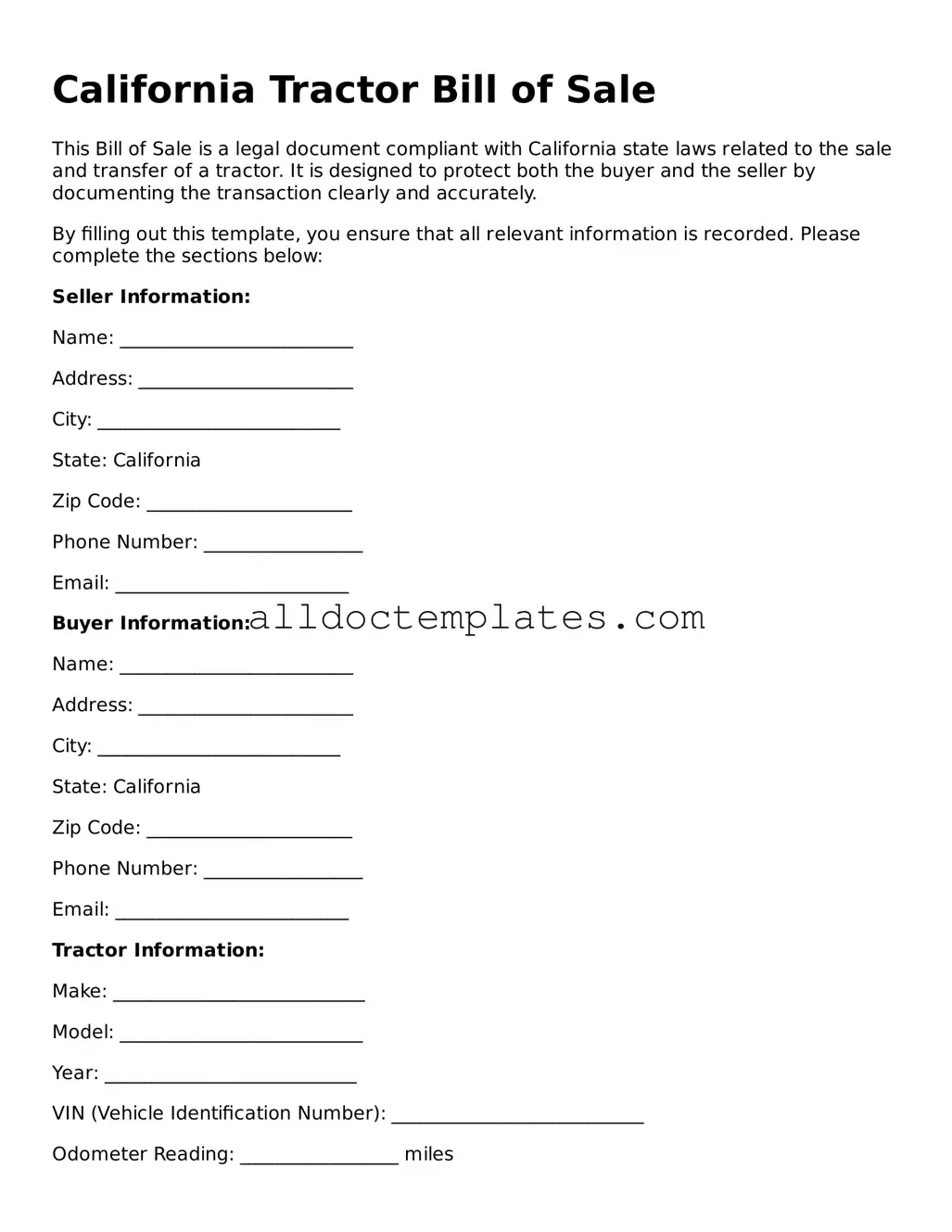California Tractor Bill of Sale
This Bill of Sale is a legal document compliant with California state laws related to the sale and transfer of a tractor. It is designed to protect both the buyer and the seller by documenting the transaction clearly and accurately.
By filling out this template, you ensure that all relevant information is recorded. Please complete the sections below:
Seller Information:
Name: _________________________
Address: _______________________
City: __________________________
State: California
Zip Code: ______________________
Phone Number: _________________
Email: _________________________
Buyer Information:
Name: _________________________
Address: _______________________
City: __________________________
State: California
Zip Code: ______________________
Phone Number: _________________
Email: _________________________
Tractor Information:
Make: ___________________________
Model: __________________________
Year: ___________________________
VIN (Vehicle Identification Number): ___________________________
Odometer Reading: _________________ miles
Transaction Details:
Sale Price: $_____________________
Date of Sale: ______________________
Both the buyer and seller acknowledge that:
- The tractor is sold "as is", without warranties against defects.
- All information provided is accurate to the best of their knowledge.
- All applicable laws regarding the sale and transfer of the tractor will be followed.
Signatures:
Seller's Signature: ______________________ Date: ________________
Buyer's Signature: ______________________ Date: ________________
This document serves as a record of the transaction between the parties involved and may be used for registration or proof of ownership as needed.
